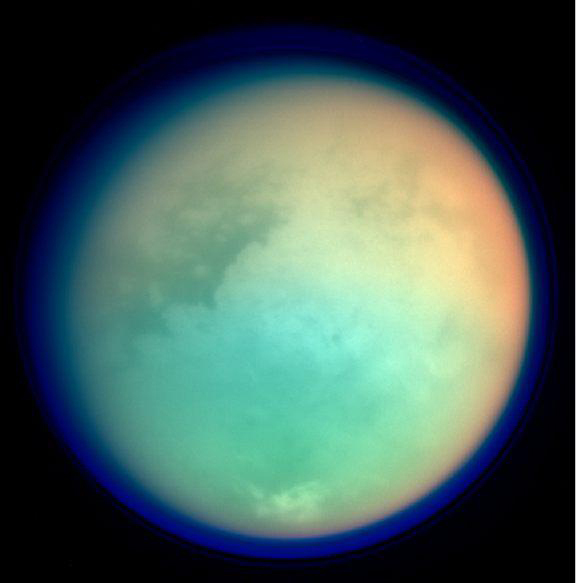Physicists from the University of Granada and University of Valencia, analyzing data sent by the Huygens probe from Titan, say they have “unequivocally” proved that there is natural electrical activity on Titan, the largest of Saturn's moons.
Scientists generally believe that the probability of organic molecules, precursors of life, being formed is higher on planets or moons which have an atmosphere with electrical storms.
Juan Antonio Morente, from the Department of Applied Physics at the University of Granada, told Servicio de Informacion y Noticias Cientificas(SINC) that Titan has been considered a “unique world in the solar system” since 1908 when, the Spanish astronomer, José Comas y Solá, discovered that it had an atmosphere, something non-existent on other moons.

“On this moon clouds with convective movements are formed and, therefore, static electrical fields and stormy conditions can be produced”, he explained. “This also considerably increases the possibility of organic and prebiotic molecules being formed, according to the theory of the Russian biochemist Alexander I. Oparín and the experiment of Stanley L. Miller”, which managed to synthesise organic compounds from inorganic compounds through electrical discharges. “That is why Titan has been one of the main objectives of the Cassini-Huygens joint mission of NASA and the European Space Agency”, added the researcher.
Morente indicated that in order to detect natural electrical activity on planets such as Earth or moons such as Titan the so-called “Schumann resonances”, a set of spectrum peaks in the extremely low frequency (ELF) portion of the radio spectrum, are measured. These peaks are produced due to the existence between the ionosphere and the surface of a huge resonant cavity in which electromagnetic fields are confined. They present two basic components: a radial electrical field and a tangential magnetic field, accompanied by a weak tangential electrical field (one hundred times smaller than the radial component).
The electrical field was measured by the mutual impedance probe (MIP), one of the instruments transported by the Huygens probe. The MIP consisted of four electrodes, two transmitters and two receptors, with a transmitter-receptor pair on each one of the probe’s folding arms. The MIP was primarily used for measuring the atmosphere’s electrical conductivity, but between each measurement of this physical magnitude it also acted as a dipolar antenna, measuring the natural electrical field in the atmosphere.
“In a stable fall, without balancing, the MIP would have measured the electrical field’s weak tangential component”, said Morente, “but fortunately a strong wind balanced the probe and the electrodes measured a superposition of that tangential and radial component”.
Despite this, the electrical field spectrums received directly from Huygens did not follow the patterns the scientists expected, as they were relatively flat and no Schumann resonances were observed. However, the team of Spanish researchers did manage to devise a procedure for revealing the hidden Schumann resonances, based on the separation of time signals known as “early” and “late-time”, which made it possible to obtain “irrefutable proof” that natural electrical activity does exist in Titan's atmosphere.
In the work, subsidised by the former Ministry of Education and Science, Government of Andalusia and the European Union, it was also explained that the atmosphere of this one of Saturn’s moon is an electromagnetic medium with high losses, and that its resonant cavity is less ideal than the Earth’s.
Article: Morente, J. A., Portí, J.A., Salinas, A., Navarro, E.A., 2008. “Evidence of electrical activity on Titan drawn from the Schumann resonances sent by Huygens probe”, Icarus 195, 802-811, 2008






Comments